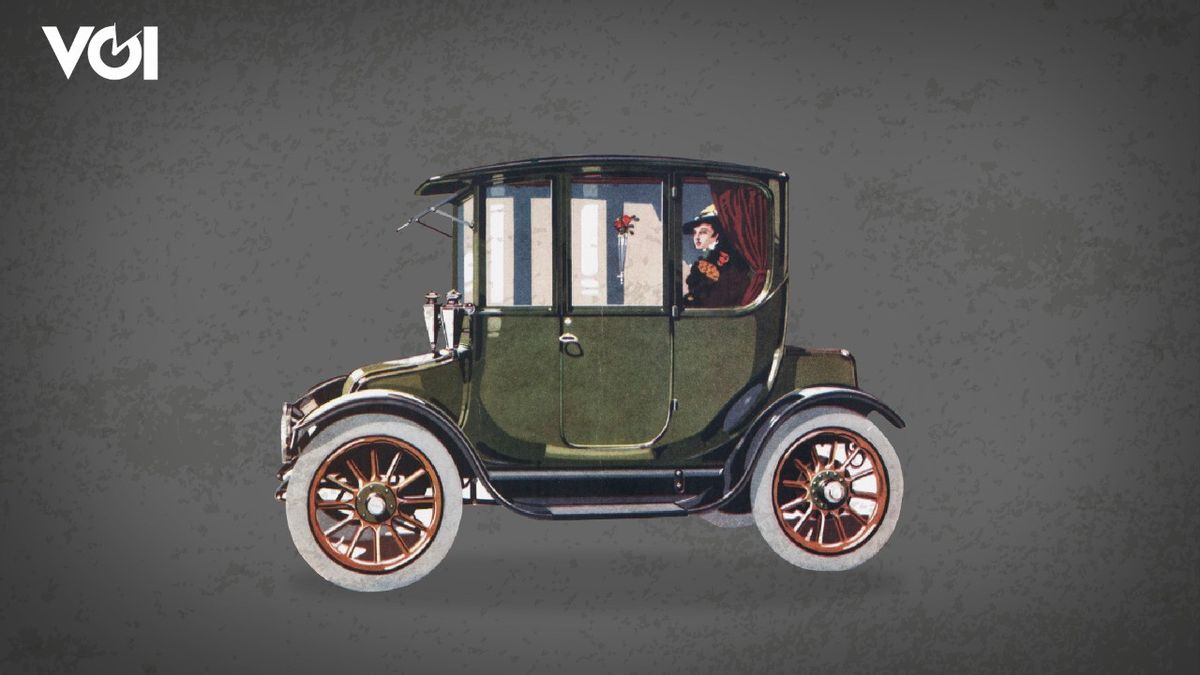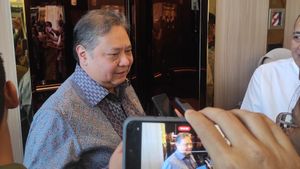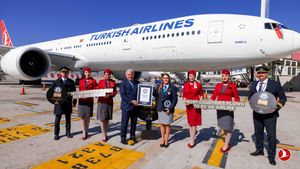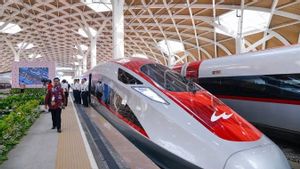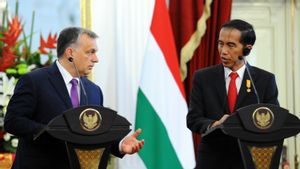Through the article "Once upon a Troubled Electric Car", we have seen the history of the problems in the development of a national electric car. Still part of VOI's signature series, "The Sting of the Enchantment of Electric Cars," let's look at a wider perspective, about the long history of developing electric cars in the world.
The electric car is a revolutionary invention. Many experts have been involved in inventing cars that are said to be environmentally friendly. Alessandro Volta, Michael Faraday, and Robert Anderson are three important names behind the history of the development of the world's electric car. The three of them welcome the progress of the times. Their big role was the beginning of how electric cars could pave the world's roads.
In fact, it is rather difficult to reveal which party pioneered the electric car. We cannot see this through the role of one person or a country alone. The arrival of electric cars was a series of breakthroughs: from batteries to electric motors.
The history of this breakthrough is also very long: from the 1700s to the 1800s. This discovery was the beginning of the current electric car industry to develop wings. Quoted by Nigel Burton in the book History of Electric Cars (2013), the discovery of an electric car was inseparable from the discovery of electrochemical cells in Mesopotamia.
Based on archaeological evidence, Mesopotamian civilization in 200 BC recognized the existence of a primitive battery, also known as the "Baghdad battery," which is used for electroplating, or the metal plating process using an electric current.

The discovery was then developed by the famous chemist and inventor, Alessandro Volta. Volta, who was born in Como, Italy, invented the electric battery in 1775. In the process of discovering the battery, Volta developed the findings of Swedish professor Johan Carl Wilcke who previously discovered a thing called "electrophoresis" or a device to generate electric charge by induction. .
“Volta was fascinated by the potential for electricity. He has done pilot work on what is now known as electrical capacitance, developed tools to study potential and cost, and experimented with very primitive ignition systems, burning methane through the generated electric sparks, "writes Nigel Burton.
Volta's discoveries opened up almost limitless possibilities. For the first time, inventors can continue to harness electricity for hours through batteries. In 1821, British chemist Michael Faraday began holding the baton of the development of electric power. From several experiments, Faraday managed to find the first electric motor in the world.
Upon this discovery, British Prime Minister (PM) Sir Robert Peel (1834-1835) asked Faraday regarding the possible development of the invention: could it be the forerunner of an electric car? Faraday replied, "Why PM? One day you can collect taxes."
A year after Faraday's discovery, British physicist Peter Barlow then produced interesting variations on the electric motor. Barlow uses an electric motor to turn the wheels. This development was used by Faraday to create the world's first dynamo.
The dynamo developed into a very important tool and is widely used as a propulsion engine. Thereafter, Farayday's work laid the foundation for the main understanding that underlies all electrical technology, including the motors and generators that operate electric vehicles in the 21st century.
Invention of the electric carElectric cars were developed in the 18th century. Several scientists and innovators from Hungary, the Netherlands, and the United States (US) began to focus on battery-powered vehicles. They then created several electric cars on a small scale, so many were not recorded in history.
Launching Energy, in the end a Scottish scientist named Robert Anderson emerged as a pioneer. Anderson has developed a three-wheeled car that uses an electric battery. Anderson's invention is considered a prototype of the world's first electric car in 1832.
Anderson's debut was followed by a chemist from the US, William Morrison, who succeeded in making an electric car in 1890 or four years after Marcedes Benz founder Karl Benz filed for the world's first modern car patent: the Benz Patent-Motorwagen.

The Morrison-made vehicle can accommodate up to six passengers and travels at a speed of 22 kilometers per hour. This development effort was continued by Ferdinand Porsche in 1898. He created an electric car with the name P1.
In breath with that, Porsche also created the world's first hybrid car that can be driven using electricity and gasoline. After that, came many terms, such as hybrid electric car, plug-in hybrid, or all-electric.
"In 1901, 38 percent of those cars were electric cars. And 20 percent or more was gasoline. And in the middle, there was steam technology," said technologist and historian David Kirsch, quoted by ABC Radio National, Wednesday , February 2.
"If you ask the great masters of their day in 1900 what technology will dominate motor-based transportation, I think most educated people will answer electricity," he added.

Long story short, the popularity of electric cars reached its peak at a time when a man named Elon Musk started developing Tesla Motors in 2004. At that time Elon Musk had the main goal of commercializing electric cars.
To start with, Elon Musk produces premium sports cars. Unexpectedly, Tesla sales, which initially only targeted the sports car market, began to expand into the sedan and SUV market. Tesla was transformed into the highest value automotive company today.

In Indonesia, the development of electric cars began in 2012. Development at that time took place under the leadership of President Susilo Bambang Yudhoyono (SBY). Dahlan Iskan, who was then Minister of State-Owned Enterprises (BUMN), became the main actor in the development of electric cars made in the country.
“Past mistakes cannot be repeated. If we don't prepare an electric car now, we will regret it a second time. In the future, when the world has switched to electric cars, we don't want to return to being the only imported car market like it is today. Electric cars made in Indonesia must be victorious. Now is the time for Indonesia to have the opportunity to compete with developed countries, ”said Dahlan Iskan in the book Entering the Era of BUMN Multinational Corporation (2013).
Launching Kompas.com, Dahlan Iskan immediately asked an Indonesian child who is an expert in the field of electric motors, Ricky Elson. Ricky is a young Indonesian who has 13 international patents on electric cars in Japan.
This achievement made Dahlan Iskan smitten. Dahlan desperately invited and convinced Ricky to return to Indonesia, after living 14 years in Japan. Ricky's task, said Dahlan Iskan, is to develop domestic electric cars.
Thanks to the trust given by Dahlan Iskan, Ricky immediately responded with the presence of three electric-powered cars in 2014. The first car was named Tucuxi. Ricky worked on the car with the founder and leader of PT Sarimas Ahmadi Pratama, Dasep Ahmadi.
However, the car failed. The brakes failed during an experiment conducted directly by Dahlan Iskan. That failure prompted Ricky to create two other cars: Selo and Gendhis. Before paving, the prototypes of the two cars were exhibited at the 2013 APEC Summit in Bali and at the 2014 Indonesia International Motor Show.

Selo sport style. Meanwhile, Gendhis is of the MPV type. Ricky must again be disappointed. This is because the car, which is actually Indonesia's first dream to own an electric car, has never received an emission test mark. The road-worthy permit did not come out. Until now, there is no sign that all these findings will be developed, let alone mass-produced.
Ricky, some time ago, recalled the electric car he made as a form of Indonesia's dream story of wanting an electric car. He uploaded the message via Facebook:
7 years ago, December 21, 2013 was the last session of the Socialization of Electric Vehicles which at that time was initiated by the Ministry of Research and Technology of the Republic of Indonesia. At the cross of Monas. Once in 4 cities. We brought SELO, Pak Dasep Ahmadi with his green electric car and trolleybus, the LIPI team and several universities also displayed his work. This event, which was attended by the Governor of DKI at the time, was the closing of this dream story. And today, Stories like that echo again. We are a nation that is always asked to have good prejudice. If that were not so, then it would be called Anti-Government. And always will.
Follow the Writing of This Edition Series: Electric Car Charm Stings
The English, Chinese, Japanese, Arabic, and French versions are automatically generated by the AI. So there may still be inaccuracies in translating, please always see Indonesian as our main language. (system supported by DigitalSiber.id)
